And now you’ve lost me with aloiampelos, aloidendron, aristaloe, gonialoe, kumara. The genus aloe has just become slightly more complicated. Memory work for 2015 will include absorbing the fan aloe’s new name Kumara plicatilis. (See Gerhard’s very helpful post here.)
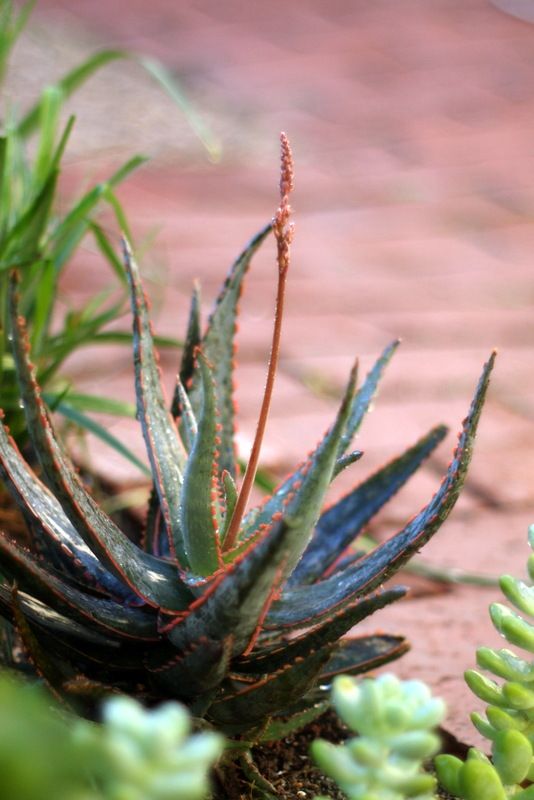
Meanwhile, I keep bringing home aloes with no tag, no name at all, as with this unlabeled hybrid. Sometimes it’s a good thing that I don’t have that meticulous collector mindset…
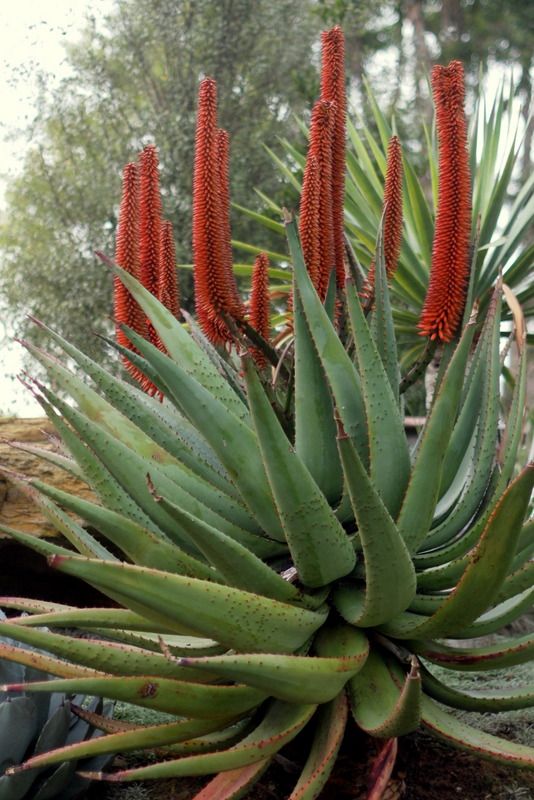
Aloes are in bloom all over town. Aloe ferox
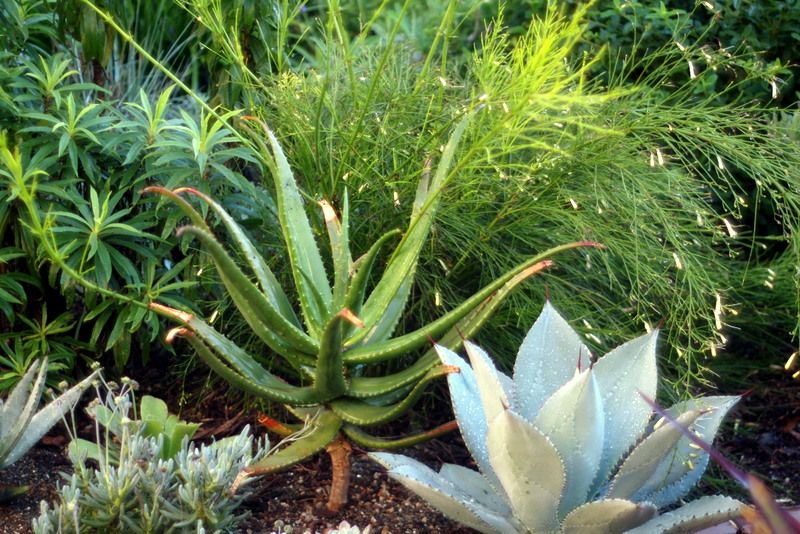
My Aloe cameronii with its first flower bud.
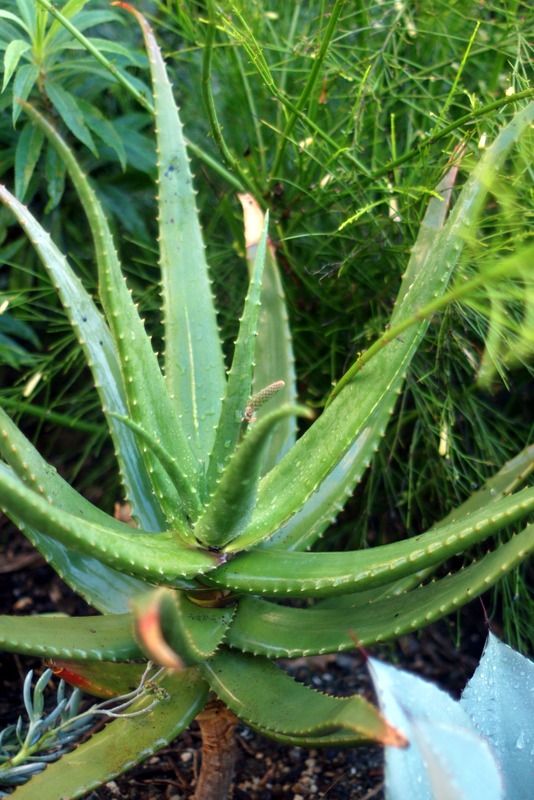
It’s right outside the office, where we had a shade tarp rigged all summer, so the Red Aloe didn’t get that deep coppery color to the leaves. Next summer we’ll have to choose between that lovely ruddy coloration on the aloe or working in a sweatbox. I know which I’d prefer. (sorry, aloe!)
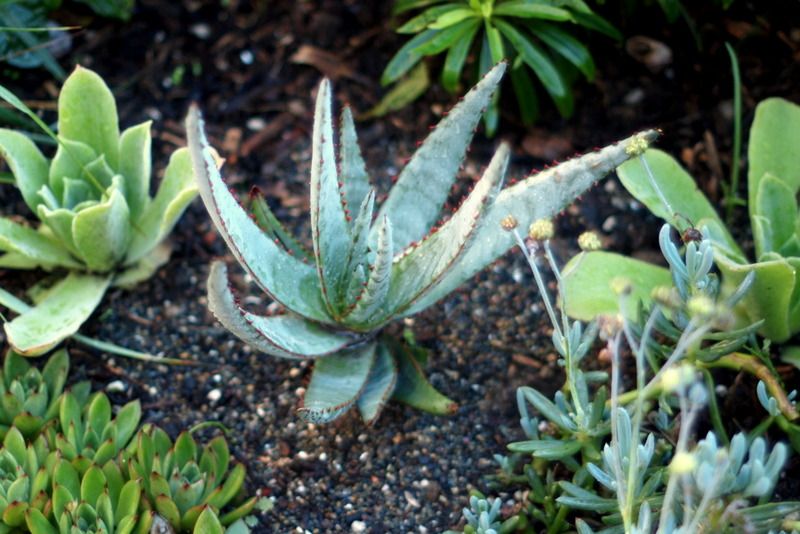
Aloe conifera, a name that promises an interesting flower shape
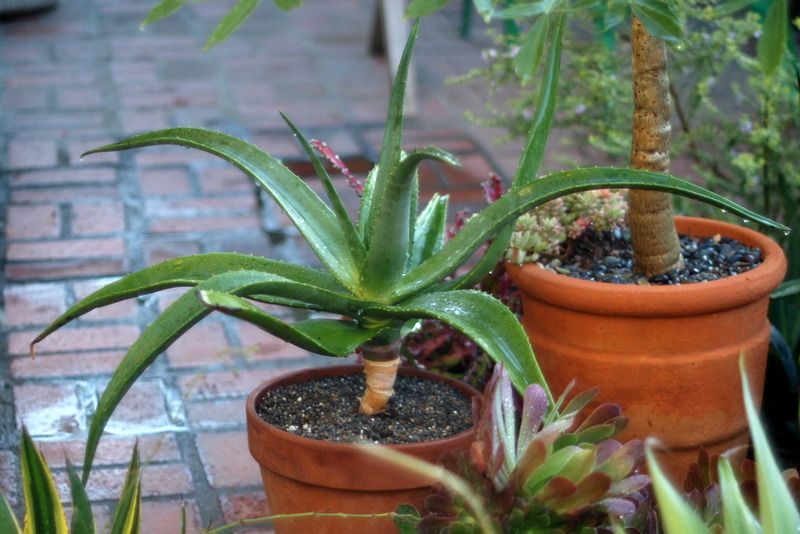
I’m guessing ‘Goliath’ will have just a very short stay in this pot. A Tree Aloe, with one parent Aloe vaombe, I’m not sure if this gets reclassified as aloidendron or not with only one parent, A. barberae, from aloidendron.
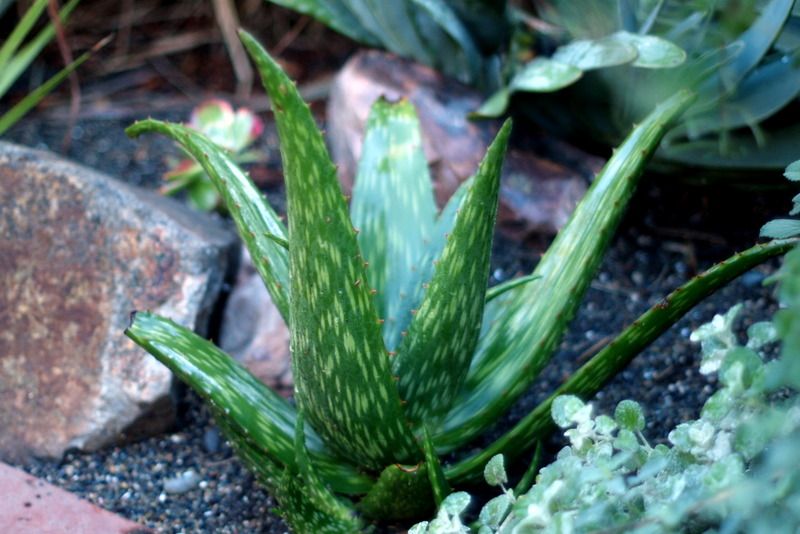
Aloe ‘Kujo,’ thought to be a hybrid found at the Huntington Botanical Garden. There will always be plenty of mysteries left to defy the most ardent taxonomist.
(Pam at Digging chats about favorite foliage on the 16th of every month.)

One day I will visit L.A. in winter to see the aloes in glorious, towering bloom. Meanwhile, I always enjoy their spotted, toothy foliage. Thanks for sharing these lovelies with us.
Pam, LA is a lot closer than South Africa!
I can’t get enough of aloes. What would we do without them for winter interest?
Interesting question about Aloe ‘Goliath’. Being a cross between Aloidendron barberae and Aloe vaombe, I would expect it could go either way. But since in form it looks like a tree aloe, I think a good case could be made for Aloidendron ‘Goliath’.
Do you know what its cold tolerance is vs. ‘Hercules’?
Gerhard
Oh my! That adds another complication to the process of identifying unlabeled succulents, although I expect the taxonomists view it as an important clarification. Gerhard’s article was a lot clearer than most of the references Google produced on the first page of my search. Last week, a few of the UK bloggers addressed the value of proper plant names, generating a lot of dialogue on the use of common vs scientific names -this post emphasizes the difficulty of keeping up with the changes. How long do you think it’ll take the nurseries to adapt? (Of course, as many forego labeling altogether, perhaps it won’t even come up on the radar screen.)
I’m so glad I bought my Aloe glauca a couple of years ago, I don’t know what I’d do without its flowers at this time of year, even if they are out in the greenhouse.
All are beautiful and the A ferox blooms are especially attractive! My mind has very limited capacity and is already so full of useless bits of trivia but perhaps there’s room to learn a few new plant names.
@Gerhard, as far as cold tolerance, San Marcos lists it at 25-30, whereas they have Hercules pegged at 20-25. One of Goliath’s parents is from Madagascar after all!
@Kris, I know…when asters became symphyotrichum it blew my mind!
@Alison, that is wonderful that it reliably blooms for you in the greenhouse. That would be a lot of fun to track down the smaller stemless aloes for greenhouse winter bloom.
@Peter, my mind went blank before Agave parryi var. truncata a couple days ago! There’s always big relief when the name floods in a few minutes later, but still…